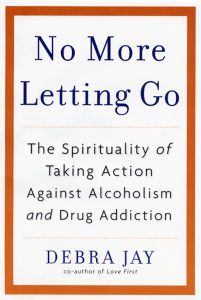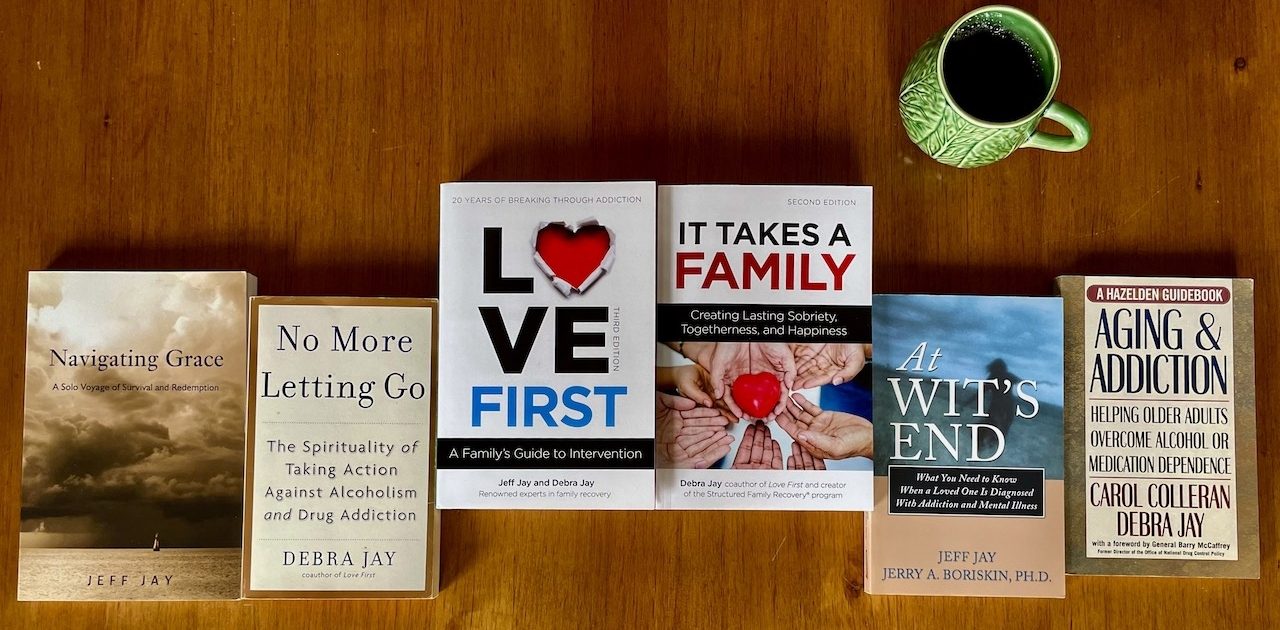When addiction begins causing serious problems, a family’s greatest fears turn into reality. They watch with disbelief as the alcoholic continues drinking while their lives are falling apart. Unable to convince the alcoholic to stop drinking, families begin searching for answers. In my years of working with the relatives of alcoholics and addicts, I have found that families rarely reach out for help until the drinking and drugging hits a crisis point, and then they are often told: “There’s nothing you can do until the alcoholic wants help. You’ll just have to let him hit bottom.”
 Hitting bottom is an old idea, still imposed upon families as if it were an absolute. Many families sadly believe that they must wait for alcoholics to hit bottom before there is any hope for recovery. They rarely stop to consider that this belief sentences them to years of unhappiness and devastation. No one ever mentions the fact that alcoholics and addicts don’t take the trip to the bottom alone–the family goes with them. Families are never warned that the journey to the bottom takes even the smallest children.
Hitting bottom is an old idea, still imposed upon families as if it were an absolute. Many families sadly believe that they must wait for alcoholics to hit bottom before there is any hope for recovery. They rarely stop to consider that this belief sentences them to years of unhappiness and devastation. No one ever mentions the fact that alcoholics and addicts don’t take the trip to the bottom alone–the family goes with them. Families are never warned that the journey to the bottom takes even the smallest children.
Hitting bottom should never be our first strategy; it is a strategy of last resorts. Only when every reasonable intervention technique is exhausted, should we let someone freefall. Even then, there are ways to raise the bottom, to stretch out the safety net of treatment and recovery. Addiction always presents new opportunities. The trick is recognizing them and knowing how to take action.
The premise of hitting bottom is that addicts hit one bottom and, when they get there, they are either struck sober or go running for the nearest treatment center. But addicts are resilient. They find people to rescue them. They often bounce along the bottom for years without a flicker of recognition that they need help. When they find themselves in a tough spot, alcohol whispers reassurances: There’s nothing to worry about as long as you have me.
I was having dinner with some recovering alcoholics, and a particularly nice fellow in his late fifties was celebrating fifteen years of sobriety. He talked about living in a roach infested, one-room apartment above a bar for twelve years, drinking and doing drugs every single day. He said his life was miserable, but he just couldn’t stop. He came close to dying several times before getting help. One of the people in our group said, “Well, you just weren’t ready.” Someone else piped in, “It takes what it takes.” Everyone’s heads nodded up and down in agreement. Stunned that my dinner companions thought that this man had to lose some of the best years of his life before he was ready to get sober, I asked, “Where was your family?” He said his wife divorced him and his kids never came around. “All for the better, really,” he added, “I wasn’t any kind of father worth having.” I asked what might have happened if everyone in his family, along with his closest friends, had come to him with a solid plan for recovery and an outpouring of love. Might he have accepted their help? Could it have turned out differently for him and his kids? Would his marriage have survived? He looked at me for a moment and then said, “I never considered that before. Who knows, I might’ve taken them up on their help. Maybe we could’ve saved our family.”
Do alcoholics ever hit bottom and then climb their way up into sobriety? Of course they do. But we never know who’ll be the lucky ones or what price they’ll pay along the way. Three hundred and fifty people a day find a bottom with no bounce – death. Countless others go to prison, go insane, or just go nowhere. Families are torn apart, children lose one or both parents and relationships are damaged beyond repair. But many begin a journey of recovery before hitting bottom–tough and rocky at first, but easier to travel as time goes on. Many things motivate alcoholics to make a turnaround before tragedy strikes, but it is usually family, friends or employers. When the Hazelden Foundation asked sober alcoholics what set them on their new course to recovery, seventy-seven percent said a friend or relative intervened. Someone cared enough to raise their bottom.
The best cases against hitting bottom are the real life stories: A college educated, 47-year-old divorced father of three loses everything, lives in his parent’s basement drinking and smoking pot daily and is unable to hold a job. A 24-year-old trades his girlfriend’s new car for crack cocaine. The police find a 72-year-old grandmother half naked and passed out on her front lawn. Babies are strapped in the backseat as a mother drives drunk to buy more wine; the police stop her, taking the children to protective services and mom to jail. A young father goes to bed drunk and suffocates on his own vomit. A successful 32-year-old woman driving home intoxicated kills a father and his daughter as she slams into them on the freeway. Each of these stories comes from families I’ve worked with and no words can express their pain or deep, abiding sense of loss. Waiting for alcoholics to hit unknown bottoms results in much tragedy and heartbreak.
“Bottoms” can be temporary. Alcoholics resist getting sober even when things are going badly in their lives. They are good at weathering storms. Perhaps they’ll swear off alcohol for a while, but as soon as things cool down, they begin drinking again. The addicted brain can’t make lasting connections between alcohol and the problems it causes. Once the problems go away, alcohol is their best friend again. Addiction is both invisible and sacred to alcoholics: they deny its existence yet sacrifice everything to it.
Addicts don’t want to cause trouble or hurt the people they love. Quite the contrary: they struggle to be the person they think they still are, the person they were before the addiction took hold. They can’t make sense of their own actions. As their addiction progresses and troubles mount, they work harder to manage their lives, but addiction never lets anyone lead a life free of trouble. There are always problems, big and small. Bad behavior, poor decisions and emotional upheaval are all symptoms of this disease that affects both the brain and soul. Families are confused, too. Not understanding what is happening to their loved ones, they mutter: “When will she learn?” But addicts can’t learn because addiction keeps tightening its grip, demanding complete allegiance.
The apostle Paul could have been describing an addict when he wrote: “I do not understand my own behavior; I do not act as I mean to, but I do things that I hate. Though the will to do what is good is in me, the power to do it is not; the good thing that I want to do. I never do; the evil thing which I do not want – that is what I do.” As alcoholics try to resolve the conflict between how they want to behave and how they are behaving, in the end, the only solution they can see is another drink.
– Excerpt from No More Letting Go.
 No More Letting Go has started a quiet revolution among family members grappling with addiction. Acclaimed by professionals and lay people alike, No More Letting Go presents a new and compelling strategy for dealing with alcoholism and drug addiction.
No More Letting Go has started a quiet revolution among family members grappling with addiction. Acclaimed by professionals and lay people alike, No More Letting Go presents a new and compelling strategy for dealing with alcoholism and drug addiction.

 Hitting bottom is an old idea, still imposed upon families as if it were an absolute. Many families sadly believe that they must wait for alcoholics to hit bottom before there is any hope for recovery. They rarely stop to consider that this belief sentences them to years of unhappiness and devastation. No one ever mentions the fact that alcoholics and addicts don’t take the trip to the bottom alone–the family goes with them. Families are never warned that the journey to the bottom takes even the smallest children.
Hitting bottom is an old idea, still imposed upon families as if it were an absolute. Many families sadly believe that they must wait for alcoholics to hit bottom before there is any hope for recovery. They rarely stop to consider that this belief sentences them to years of unhappiness and devastation. No one ever mentions the fact that alcoholics and addicts don’t take the trip to the bottom alone–the family goes with them. Families are never warned that the journey to the bottom takes even the smallest children.

